International Journal of Veterinary Science and Research
Effects of some management factors (Housing condition and watering regimen) on blood parameters of desert goats
Mohammed Alhadi Ebahiem1*, Intisar Alnour Ismail2, salah Abulgabar Salah Bukhari3, Suleiman Eshag Abdalla Mohamed4, Salah Basar Hammad Dahia4, Adam Jumaa Hamid Hamdoun5 and Jumaa Barram Jadalla1
2Department of School Farming, Faculty of Education, University of Kordofan, Sudan
3Department of Animal Production, Faculty of Natural Resources and Environmental Studies, University of Alsallam, Alfula, Sudan
4Department of Animal Production, Faculty of Agriculture Sciences, University of Dalanj, Sudan
5Department of Animal Production, Faculty of Natural Resources and Environmental Studies, University of Alsallam, Sudan
Cite this as
Ebahiem MA, Ismail IA, Salah Bukhari SA, Abdalla Mohamed SE, Hammad Dahia SB, et al. (2021) Effects of some management factors (Housing condition and watering regimen) on blood parameters of desert goats. Int J Vet Sci Res 7(2): 191-195. DOI: 10.17352/ijvsr.000099Copyright
© 2021 Ebahiem MA, et al. This is an open-access article distributed under the terms of the Creative Commons Attribution License, which permits unrestricted use, distribution, and reproduction in any medium, provided the original author and source are credited.This study aimed to assess the effects of housing condition and watering regimen on some blood parameters during the period May 2018- February 2019. Desert goat Package Cell Volume% (PCV %) were highest during January, February and lowest during May, and August. Goats had the highest (P<0.001) blood Hemoglobin (Hb%) during May and July with very slight fluctuations throughout the seven months of the experimental period. Goats under shade had comparatively higher PCV% and slightly lower Hb% in comparison with those under direct sunlight. Plasma Calcium was low during February and January and rose during December with higher levels during May, June and July. Goat plasma phosphorus concentrations followed an opposite picture being highest (P<0.01) during October, December, and February and lowest (P<0.01) during other months. Plasma Calcium (Ca) and Phosphorus (P) concentrations were slightly (P>0.05) higher for goats under shade compared with those under direct sunlight. The main effects of months on blood metabolites were highly significant (P<0.01). The highest goat blood protein was during, June-July and lowest (P<0.01) during other months. Goat blood albumen levels were highest (P<0.001) for August- September- October and lowest for January- February whereas blood glucose levels were highest (P<0.01) during January- February and with very slight fluctuations throughout the seven months of the experimental period. Blood protein, blood albumin and blood glucose levels were relatively higher (P>0.05) for goats under shade compared with those under direct sunlight. Goats watered everyday had slightly lower blood protein and albumin and slightly higher blood glucose in comparison with goats watered every other day.
Introduction
Under normal circumstances, livestock are able to maintain their body temperature at a safe range, so long as they have shade and plenty of water. In extreme heat, they will decrease their grazing time and spend more time in the shade, especially during the hot hours of the day. They will graze mostly in the evening and early morning hours, and rest during the heat of the day [1]. While heat stress (exhaustion or stroke) is not very common in sheep and goats in temperate climates, it may occur; especially if stocks are handled during the hottest part of the day [2]. Clinical signs of heat stress include continual panting, rapid.
The lower values of PCV and Hb concentrations obtained during dry summer in Nubian goats with low level of nutrition were attributed to depression of food intake of goats with a rise in ambient temperature [3]. The viscosity of blood plasma protein was negatively correlated to environmental temperature [4]. The authors [5,6] found that serum total protein levels were higher in hot summer than in winter Mean mineral concentrations in the blood of animals are above the critical limit during dry and wet seasons with no significant seasonal differences [7]. This study was conducted with the ultimate objective of delineating the effects of housing condition and watering regimen on some Blood parameters of Desert goats.
Materials and methods
The study area
This study was conducted at El-Obeid, Sheikan Province, North Kordofan State (latitudes 11°:15ˉ-16°:30ˉN; longitudes 27°-32°E. The average temperature varies between 30°C-35°C during most of the year with peaks of above 40°C during April, May and June. The rainy season extends from July to October with maximum rainfall in August. The long-term average annual rainfall is about 280 mm/Year [8].
Experimental animals
28 Sudan Desert goats (3-4 months old, average body weight 11.8±1.35 kg) were used in these trials. Goats were ear-tagged, vaccinated against, pox and HS and treated with Ivomec (IvomectinR) at 0.5 ml/goat/body weight administered twice at an interval of three weeks, against internal and external parasites. The goats were also injected with oxytetracycline as an anti-coccidian treatment applied at 0.5 ml/goat/body weight. All goats were allowed one week as an adaptation period.
Trials layout
The goats were randomly divided into two equal groups based on their initial body weight and age. One group was randomly allocated to a shaded condition in pens of 9x4 m2 while the other group was left on the open with no shade. All goats were tethered and were provided with individual feeding and watering troughs. Each group was again randomly subdivided into two similar groups based on initial body weight and age. One received water every day whereas the other one was watered every other day. Feed was offered ad libitum and consisted of grass straw and hay of browse trees
Blood collection and processing
Blood samples (10 ml) were drawn from the jugular vein of animals using disposable syringes. One ml of blood was immediately was transferred to a capped test tube containing an anticoagulant (K EDTA) for blood analysis. One ml of blood was kept in a test tube and after centrifugation; the plasma sample was used for glucose determination. The rest of the blood sample was allowed to stay for 4-5 hrs at room temperature and then centrifuged (Gallenkamp Junior) at 3000 rpm for 15 min. Hemolysis-free serum was transferred to clean plastic vials and immediately frozen at -20°C for subsequent analysis.
Packed Cell Volume (PCV): PCV was determined in duplicate using a micro-hematocrit centrifuge (Hettich, Tuttlingen, Germany). The hemoglobin concentration was determined by the cyano-methemoglobin method [9].
Plasma glucose: The plasma glucose level was determined by the enzymatic colorimetric method using a kit (Randox Laboratories Ltd, London) according to the methods of [10].
Serum metabolites: Serum total protein concentration was determined using Biuret reagent (King, and. Wootton, 1956). Serum albumin concentration was determined by a colorimetric method according to [11].
Blood minerals concentrations: P and Ca in blood plasma were determined according to the methods of [10].
Statistical analysis
The experimental design is a Complete Randomized Design (CRD) that has seven treatments and four replicates. The data is analyzed using analysis of variance [12]. The difference among treatment means were detected using least significance difference test [13].
Results
The main effects of months, house condition and watering regimen on goat hematological indices and plasma calcium and phosphorus levels are displayed in Tables 1,2. Monthly differences in hematological indices and plasma Ca and P levels were highly significant (P<0.001). PCV reported low value during May and August and rose during December and February through January (Figure 1). Goats had the highest (P<0.001) Hb% during May, and July with very slight fluctuations throughout the seven months of the experimental period (Figure 2). Goat plasma Ca and P concentrations were significantly (P<0.001) affected by months. Plasma Ca was low during February and January, and rose during December, with higher levels during May, June and July followed by August, September and October Goat plasma P concentrations followed an opposite picture being highest (P<0.01) during Oct, Dec and February and lowest (P<0.01) during other months with no differences (P>0.05) between summer and rainy seasons (Table 2). Housing condition exerted no main effect (P>0.05) on any of the hematological indices of plasma Ca and P concentrations. Nonetheless, goats under shade had comparatively higher PCV% and slightly lower Hb% in comparison with those under direct sunlight. Plasma Ca and P concentrations were slightly for goats under shade compared with those under direct sunlight. Respective PCV% for the two goat groups were 39.0 and 38.5% whereas respective Hb% were 66.114 and 68.36%. Plasma Ca and P concentrations (mg/100 ml) for goats under shade and those under direct sunlight were 12.3 and 12.1 mg Ca/100 ml, and 9.9 and 9.8 mg P/100 ml, respectively (Table 2). Interaction effects among the three factors studied (months, housing condition and watering regime) were not significant (P>0.05).
Effects of months, housing condition and watering regimen on blood metabolites
Table 3 depicts the main effects of months, housing condition and watering regimen on blood metabolites of Sudan Desert goats. Monthly main effects on blood metabolites were highly significant (P<0.01). The highest goat blood protein was during, June Jul and lowest (P<0.01) during other months (Figure 3). Goat blood albumen levels were highest (P<0.001) during September and October and lowest (P<0.001) during January and February whereas blood glucose levels were highest (P<0.01) during Jan and February and with very slight fluctuations throughout the seven months of the experimental period (Figure 4). Housing condition affects on protein no effect (P>0.05) on albumen levels and blood glucose. However, blood protein, blood albumin and blood glucose levels were relatively higher (P>0.05) for goats under shade compared with those under direct sunlight. Respective blood protein levels were 42.8 and 40.5, blood albumin levels were 33.9 and 32.9, and blood glucose levels were 152.3 and 123.2 mg/100 ml for goats under shade and those under direct sunlight, respectively (Table 3). The watering regimen had no effect (P>0.05) on goat blood protein, goat blood albumen, or goat blood glucose (Table 3). Nonetheless, goats watered everyday had slightly lower blood protein and albumin and slightly higher blood glucose in comparison with goats watered every other day. Blood protein values for goats watered every day and those watered every other day were 41.9 and 41.6 mg/100 ml, respectively, their respective albumen levels were 33.2 and 33.6 mg/100 ml, and their respective blood glucose levels were 155.2 and 120.3 mg/100 ml (Table 3). No significant interaction effects (P>0.05) were revealed among the three factors studied.
Discussion
PCV was affected either by housing condition or watering regime. This was in disagreement with the findings of some workers who reported that Yankasa sheep [14,15], Awassi sheep [3,16] and goats [17,18] subjected to water restriction had increased PCV%. Nonetheless, the results of this study were supported by [19] who found no significant variation in PCV values of goats restricted to 50 % and 30 % of their free choice water intake but monthly variations were different (P<0.01). The same results were obtained for Hb, with no main effects of housing condition and watering regimen but significant monthly effects. This result was in line with [7] working on goats, and [6,20,21] working on sheep who found relatively high mean PCV values under restricted watering regimen. Lower PCV and Hb values during summer season could be ascribed to the lower nutritional value of grazing resources during the dry period of the year [22]. Plasma Calcium and Phosphorus levels were not affected (P>0.05) by both housing condition and watering regime. This was in accord with the findings of [23] who reported that the Inorganic phosphorus level was not affected by exposure to direct sunlight from 8.30. (32.3°C) for 3 consecutive days in Patanwadi sheep but significantly affected by month. Authors [5,24] noted that the inorganic phosphorus level was significantly lower during summer than in winter, in Karakul sheep, whereas in this study plasma P level was highest during October, December and February and plasma Ca was highest during May, June and July. On the contrary [25] reported phosphorus levels in Rambouillet, Chokla Malpura and Rambouillet x Malpura ram plasma to increase during hot conditions while [26] found that plasma Calcium concentration of goats on grasses was higher during wet season Blood metabolites are affected by month’s variations [6]. Serum total protein was lowest in June Jul and highest (P<0.01) during other months, whereas serum albumin was highest during September and October and lowest during January and February. This was in disagreement with [4] who reports that serum total protein levels were lower in summer than in winter in Karakul sheep also. However, the results were supported by [5] who found that serum total protein levels were higher in hot summer than in winter in Chios lambs. Blood glucose level was not affected by either housing condition or watering regimen [23] stated that blood glucose was not affected by exposure to direct sunlight from 8.30 (32.3°C) to 14.30 h (37.7°C) for three consecutive days during the last week of May and watering regime but showed high significance on months differences. Blood glucose levels were highest during January and February and lower during the rainy season, contrasting the findings of [25,27-30] who found that mature Ossimi ewe’s blood glucose levels were higher during summer than winter.
- Schoenian S (2010) Small Ruminant Info Sheet, Sheep and goats: Heat stress in sheep and goats. University of Maryland Extension.
- Silanikove N (2000) The physiological basis of adaptation in goats to harsh environments. Small Rumin Res 35: 181-193. Link: https://bit.ly/3ehuuKo
- Laden SL (1987) Dehydration tolerance in Awassi fat tailed sheep. Can J Zool 65: 363-367. Link: https://bit.ly/3ew9Ne5
- Kamal TH (1962) Metabolic reactions during thermal stress (35 to 95°F) in dairy animal acclimated at 50 and 80°F". Missouri Agricultural Experimental Station.
- Baumgartner W, Parnthaner A (1994) Influence of age, season and pregnancy upon blood parameters in Austrian Karakul sheep. Small Rumin Res 11: 147-151. Link: https://bit.ly/3ssXmYu
- Salem JA (1998) Effect of season and ascorbic acid supplementation on some blood constituentsof suckling Chois lambs and its crosses with Ossimi sheep in Upper Egypt. Assiut J Agric Sci 29: 87–100.
- Prakash P, Rathore VS (1991) Seasonal variations in blood serum profiles of triiodothyronine and thyroxine in goat. Indian J Animal Sci 61: 1331-1312.
- Technoserve AH (2004) Credit component baseline survey. Technoserve Inc., Agricultural Bank of Sudan and US Agency for Agricultural Development, Elobied, Sudan.
- Schalm OW, Jain NC, Carrol EJ (1975) Veterinary Haematology. 3rd edition, Lea and Febiger, Philadelphia, USA 807. Link: https://bit.ly/3H7yeuC
- Tinder P (1969) Annual Clinical Biochemistry Bulletin No. 24 turnover in relation to heat tolerance response by sheep, Egypt. J Anim Prod 31: 317–327.
- Douman BT (1971) Albumin standards and measurements of serum albumin with bromocresol green during dehydration in Dorper sheep. J Agric Sci 103-119.
- Steel RG, Torrie JH (1996) Principles and procedures of statistics, 2nd ed., Prentice-Hall of India, New Delhi.
- Snecedor GW, Cochran WG (1980) The Statistical Methods The Iowa State. University Press. USA. Link: https://bit.ly/3yToWPJ
- Aganga AA, Umunna NN, Oyedipe EO, Okoh PN (1989) Influence of water restriction on serum component in Yankasa ewes. Small Rumin Res 2: 19-26. Link: https://bit.ly/3FndBtA
- Igbokwe IO, Itidal AE (1989) Desert goats and sheep meat production and quality. MSc thesis Faculty of Animal Production, University of Khartoum. J Agric Sci 93: 587–591.
- Jaber LS, Habre A, Rawda N, Abi Said M, Barbour EK (2004) The effect of water restriction on certain physiological parameters in Awassi sheep. Small Rumin Res 54: 115–120. Link: https://bit.ly/3pgJf6E
- El-Nouty FD, Al-Haidary AA, Basmaeil SM (1990) Physiological responses, feed intake, urine volume and serum osmolarity of Aardi goats deprived of water during spring and summer. Asian-Australian J Anim Sci 3: 331-336. Link: https://bit.ly/32qPonI
- Snedecor GW, CochranWG (1982) Statistical method. 6th ed- oxford and IBH, New, Delhi- version R.G.,1982. Lipid metabolism in adipose tissues of ruminant animals. Progress in lipid research 19-23.
- Ajibola A (2000) Intestinal function in goats. MSc. Thesis; 2000, University of Pretoria, South Africa.
- Assane M, Sere A (1990) Influence of season and gestation on plasma concentration of thyroidhormones: triiodothyronine (T) and thyroxine (T ) 3 4in Peuth ewes of the Sahel. Annals de Recherches Australian Merino sheep. Small Rumin Res 49: 193-198.
- Okab AB, Elebanna IM, Mekkawy MY, Hassan GA (1993) Seasonal changes in plasma thyroid hormones, total lipidsand serum trans-aminases during pregnancy and at parturition in Barki and Rahmani ewes. Indian J Anim Sci 63: 946 -951. Link: https://bit.ly/3pj1kAT
- Degen AA, Kam M (1992) Body mass loss and body fluid shifts during dehydration in Dorper sheep. J Agric Sci (Cambridge) 119: 419-422. Link: https://bit.ly/3phOhQa
- Patel JS (1991) Effect of temperature on certain blood constituents in Patanwadi and its crosses with Merino and Ramboullet. Indian Vet J 68: 1134-1138. Link: https://bit.ly/3szcQdk
- Forbes JM (1981) The drinking behavior of lactating cows offered silage adlib. Proceedings of the Nutritional Society 50: 97.
- More T, Rai AK, Singh M (1980) Note on the effect of thermal exposure on body fluid composition of different breeds and breed crosses of sheep. Indian J Anim Sci 50: 207-209.
- Kumagaai H, Ishida N, Katsumata M, Yano H, Kawashima R, et al. (1990) Astudy on nutritional status of macro minerals of cattle in Java. Indonesia. AJAS 3: 7-13. Link: https://bit.ly/3H2Dxv9
- Marai IFM, Daader AH, Mekkawy MY, Gabr HA, Ibrahim H (1992) Effect of housing system, season of year and age on some physiological parameters and blood constituents of Ossimi sheep. J Arid Environ 22: 277-285. Link: https://bit.ly/3EgwIUV
- Lu CD (1989) Effect of heat stress on goat production. Small Rumin Res 2: 151-162. Link: https://bit.ly/32kS3PP
- King EJ, Wootton IDP (1965) Determination of total protein in plasma or serum. In: Microanalysis in Medical Biochemistry. Churchill Ltd, London.
- El-Tahir BA (1999) Review of pastoral and agro pastoral system in North Kordofan, Sudan. Special assignment report, SOS Sahel International, UK and El-Ain natural forest Management Project, El-Obeid, Sudan 30.
Article Alerts
Subscribe to our articles alerts and stay tuned.
 This work is licensed under a Creative Commons Attribution 4.0 International License.
This work is licensed under a Creative Commons Attribution 4.0 International License.
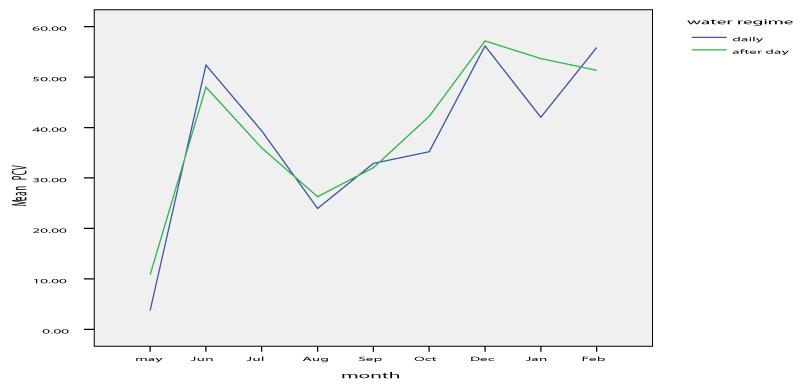
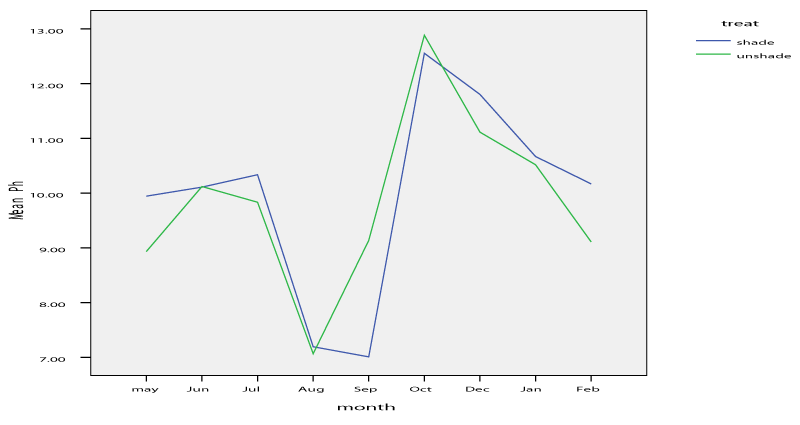
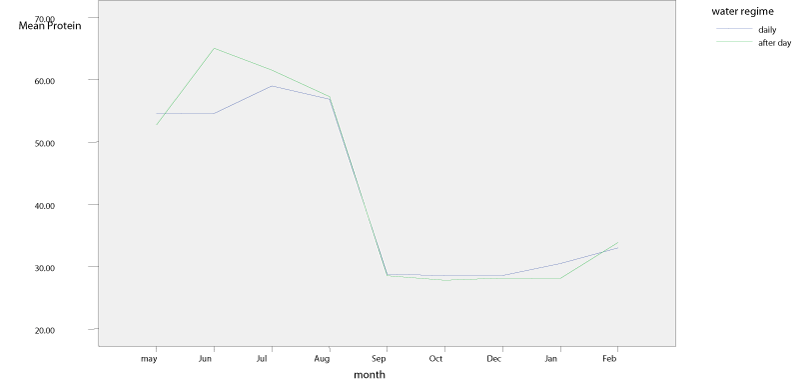
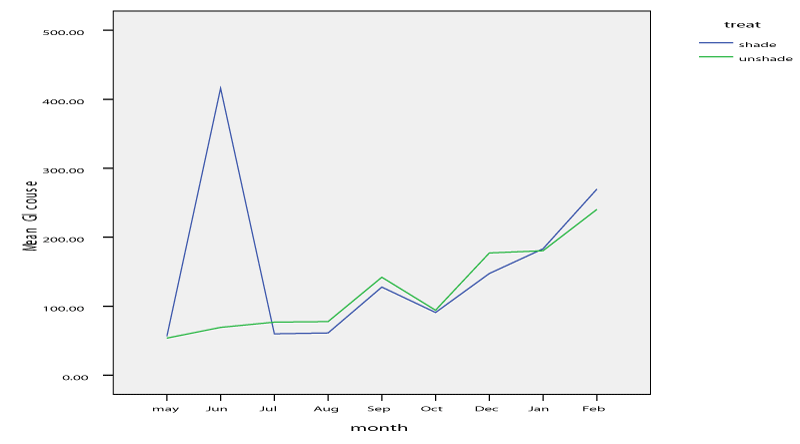
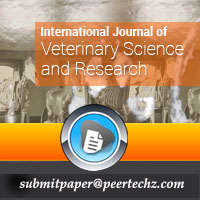
 Save to Mendeley
Save to Mendeley
